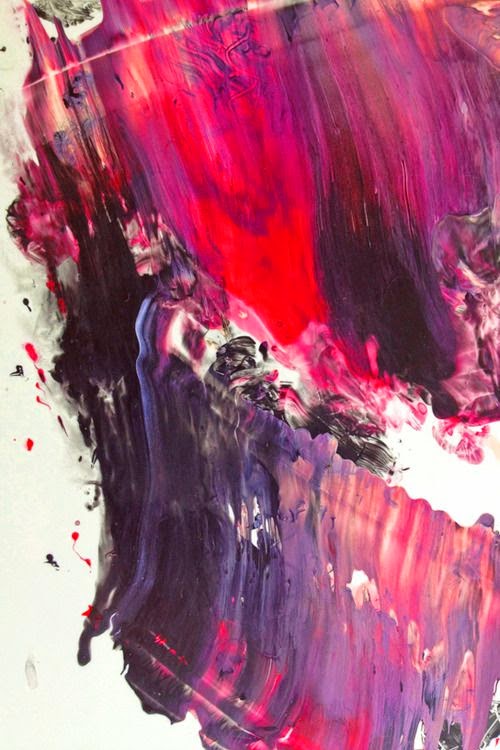Visiting the San Diego Museum of Art last fall with a friend.
Last May I met up with one of my best friends and her husband Drew in New
York and we went to the Guggenheim. Drew (who happens to be my dentist)
was so excited to go to a museum with me (an art major) so that I could guide,
and explain my knowledge about contemporary artwork. His enthusiasm was one of the
very reasons the trip was so fun. Teaching someone about a subject that you spent years
(and a lot of college tuition on) is a rare occurrence. So I thought I'd share
some tips on visiting museums when you are not an art enthusiast.
Read the Explainers and Pay for Voice Guides
Whether it's a painting, recording, sculpture, building, or some other art form, a piece of art is the result of feelings from a certain time and place in history. Even just a brief explanation of that history empowers us, as an audience, to understand and empathize with artists more. It helps to follow experts as they explain their interpretations of art pieces, because they've spent more time with it, and likely have studied the field.
If you have a friend who's extremely knowledgeable about the art form you want to see, go with them. It makes a world of difference. I went to an art gallery with a friend who studied art history, and she shared relevant information that I wouldn't have known about how the artist's life affected their paintings. Remember to balance between getting context and actually feeling the art. I spent a lot of time reading the captions to reinforce my own understanding, but she spent most of her time looking at the actual piece and pointed stuff out that I likely wouldn't have seen.
Consume Art Mindfully
A lot of times, we try to examine a piece of art based on skill ... "Wow, I could never do that," or, "Oh, my kid could have made that". However, it's important to remember that judging a piece of art takes your attention away from your reaction to, and feelings about, the actual piece. Instead, shift your attention to your reaction to the art. How are you feeling when you hear the piece, or see it, or walk through an incredible piece of interior design or architecture?
This is why exploring abstract art can be so challenging. Many people quickly dismiss abstract art as something elementary, vague, and/or pretentious. This makes it the perfect practice for being mindful as you consume it. Don't judge it. Immerse yourself in it and feel it.
Think About Art: Ask Questions
Questions can be great guides to focus your mind as it processes the art piece. There are different things to be sensitive to in each art form. For example, in visual arts, you'll want to look for symbols. Consider the color palettes and combinations. When walking through a piece of architecture, ask yourself why the artist designed certain details or nuances. Its like, when you're listening to a live performance or a soundtrack, think about the beat, tempo, and mood changes throughout the songs. In some cases, listen to the lyrics and think about their possible meanings. Four important questions to ask yourself are:
- What am I looking at?
- How was it made?
- When was it made, and what was happening in the world at that time?
- What is it saying? What is its meaning to the artist, and to us now?
Learn How People Make Art
The final product of art may look like it's easy to make. However, you never truly grasp the difficulties and nuances of a process until you learn about — and ultimately try — it.
A good first step to understanding how people make art could be to simply watch the process.
If you find yourself particularly curious about a certain art form or type, consider taking a class. It's a step that will almost definitely further enhance your taste, understanding, and empathy for art. Once you explore the process behind the art, you may grow to appreciate the dedication and work ethic that goes into each piece even more.
You Might Eventually Even Like Art
Hopefully, some of these techniques will enable you to hate art less (and maybe even grow to appreciate certain forms). Enjoying art doesn't take a completely different way of thinking. Instead, it just takes a bit of empathy and understanding.





























































